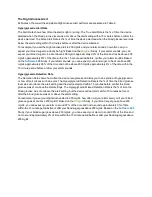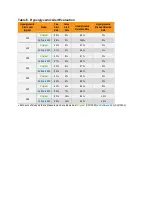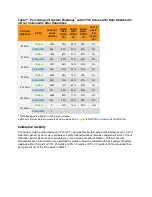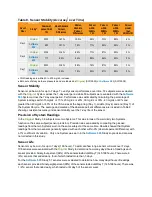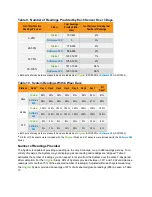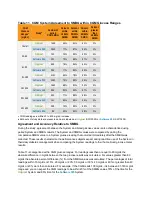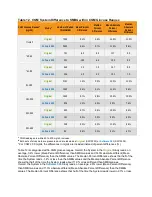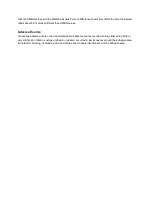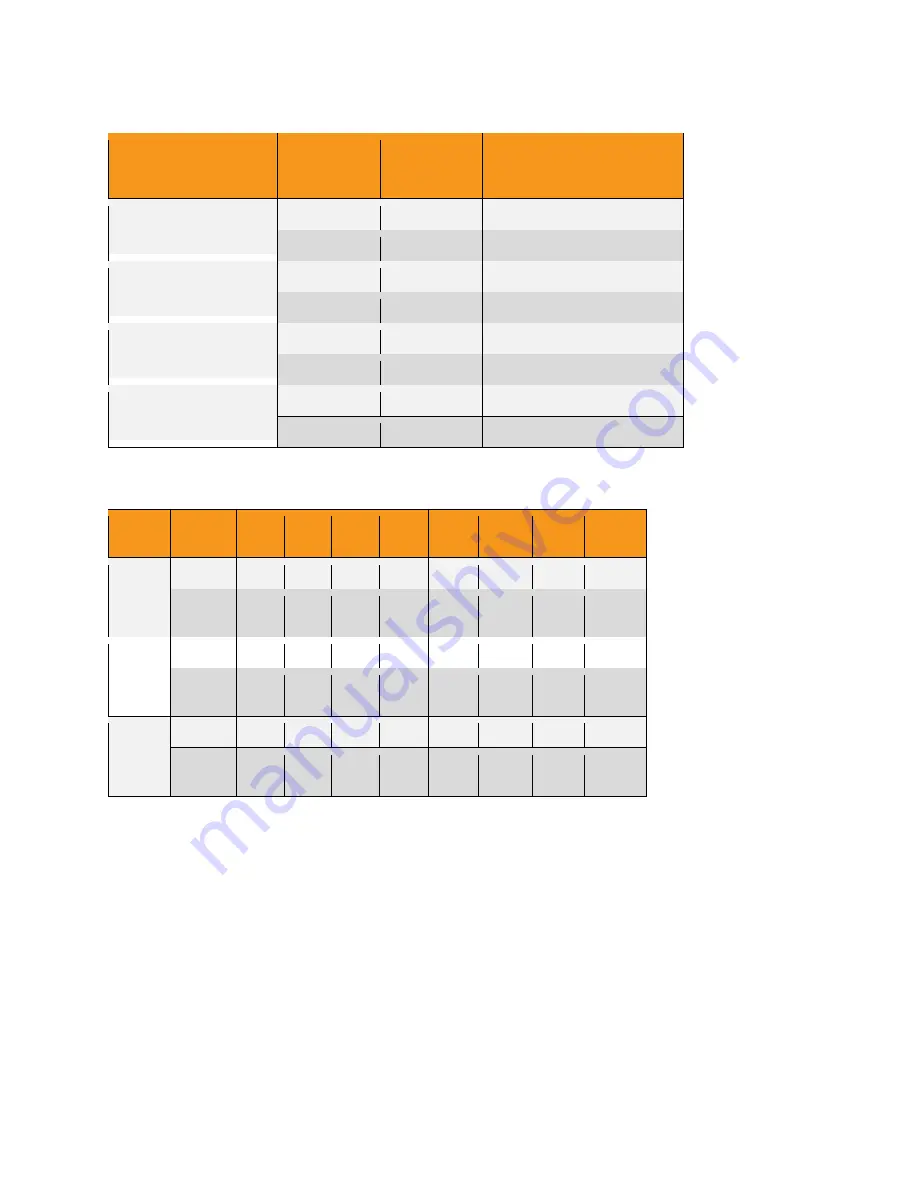
Table 9. Number of Readings Provided by Each Sensor Over 7-Days
% of Total Possible
Readings Provided
Study
1
Total Readings
Provided (Min-
Max)
% of Systems Providing that
Number of Readings
0-25%
Original
167-491
2%
Software 505
0
0%
26-50%
Original
719-914
4%
Software 505
856-856
2%
51-75%
Original
1267-1267
1%
Software 505
1253-1253
2%
76-100%
Original
1811-1992
94%
Software 505
1497-1992
96%
1
Both sets of study data are presented and are labeled as
Original
(SW10050) or
Software 505
(SW10505).
Table 10. System Readings Within Wear Days
Statistic Study
1
Day 1 Day 2 Day 3 Day 4 Day 5 Day 6 Day 7
All
Days
2
Mean
Original
98% 98% 98%
98%
97%
99%
95%
97%
Software
505
98% 99% 98%
98%
96%
99%
97%
98%
Median
Original
100% 100% 100% 100% 100% 100% 100%
100%
Software
505
99% 100% 100% 100% 100% 100% 100%
100%
STD
Original
5%
3%
9%
8%
10%
3%
11%
8%
Software
505
3%
2%
8%
11%
15%
2%
13%
9%
1
Both sets of study data are presented and are labeled as
Original
(SW10050) or
Software 505
(SW10505).
2
A total of 108 sensors were included with the
Original
Study and 51 sensors were included with the
Software 505
Study.
Number of Readings Provided
The System is capable of providing a reading up to every 5 minutes, or up to 288 readings per day. For a
variety of reasons, the System may not display a glucose reading and readings are “skipped.” Table 9
estimates the number of readings you can expect to receive from the System over the entire 7-day period
after calibration. For the
Original
Study, 94% of Systems provided between 1,811 and 1,992 valid glucose
readings (or more than 75% of the expected number of readings). Adjusted within each system wear-day,
the
Original
System provided an average of 97% of all expected glucose readings (288) as seen in Table
10.











